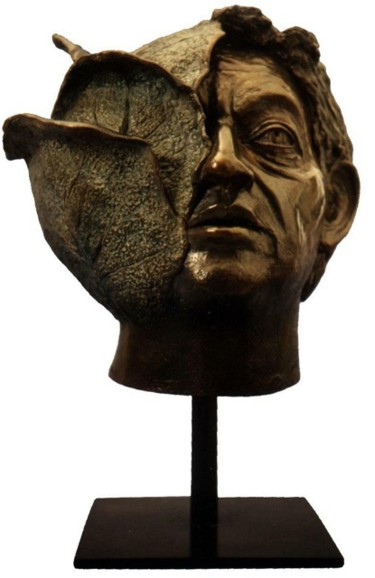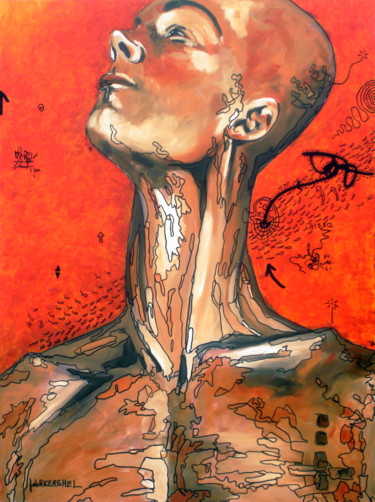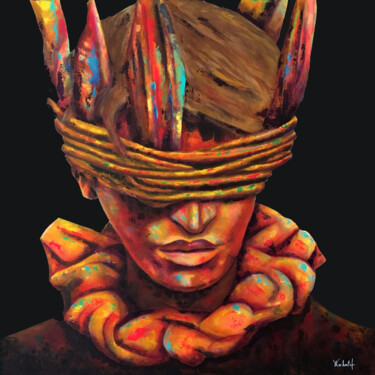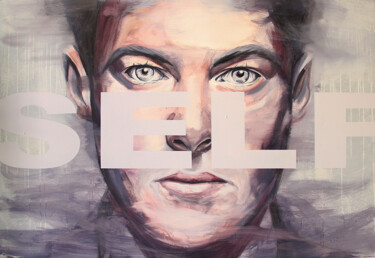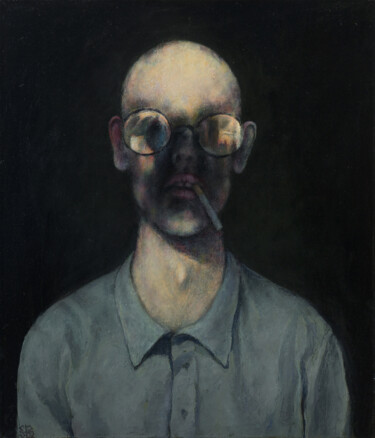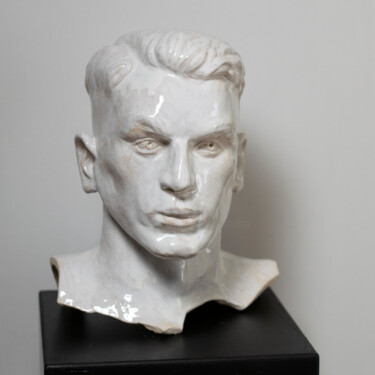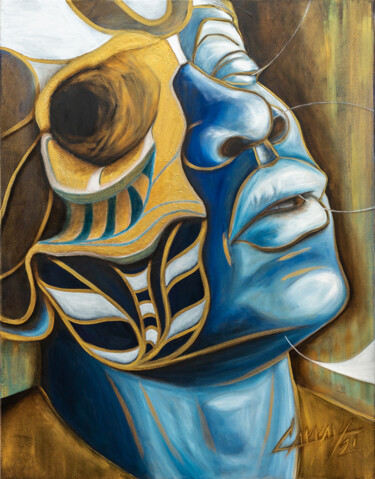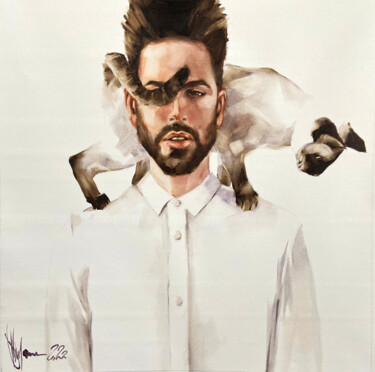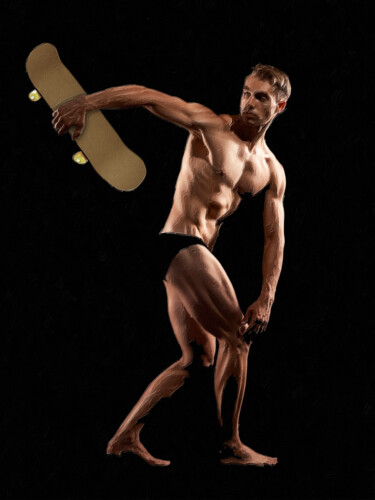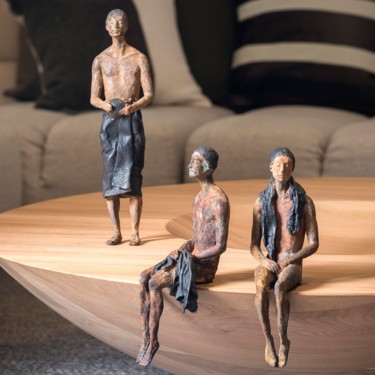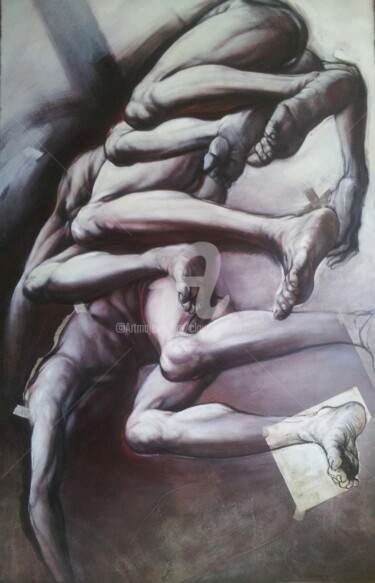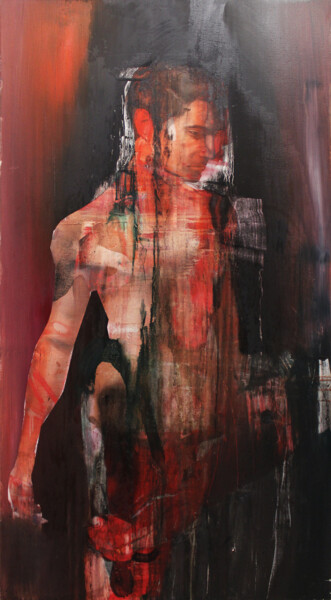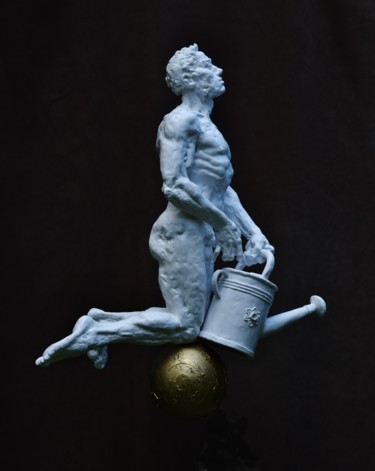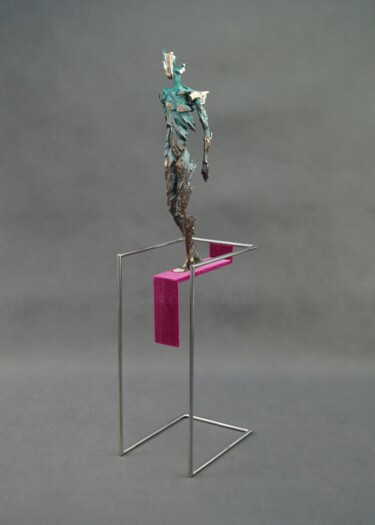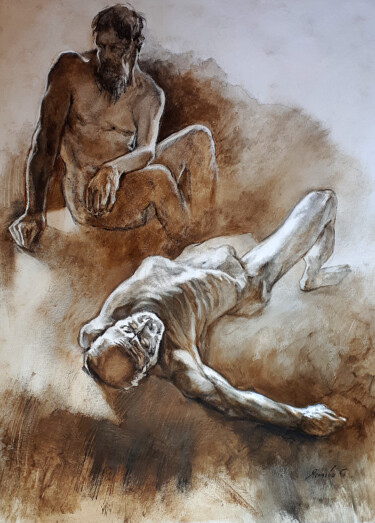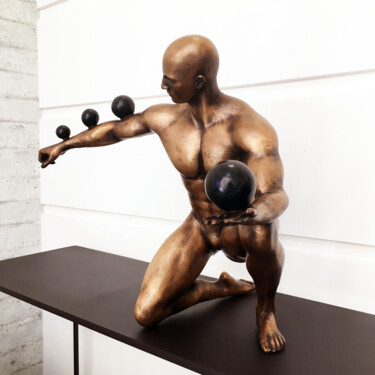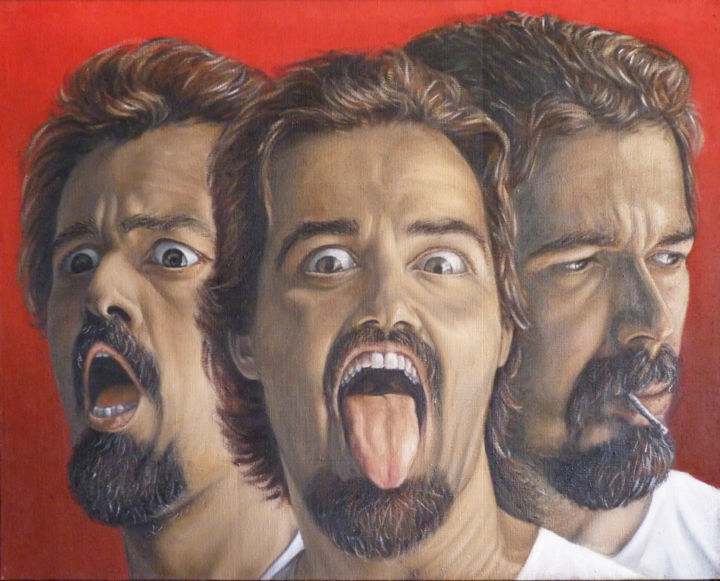 Silvia Rea, Trilogy of the Soul. Oil on canvas, 80 x 100 cm.
Silvia Rea, Trilogy of the Soul. Oil on canvas, 80 x 100 cm.
The portrait, a genre in continuous evolution
Even before the advent of photography, paintings have been the medium through which, since ancient times, the great masters have investigated and immortalized the human figure, making it eternal. At first, this genre was used only to depict the powerful and the gods, but, since the fifteenth century, it began to develop in its modern sense, capturing the faces of the exponents of the bourgeoisie. From this moment on, the portrait developed into many types, such as the bust, the half-figure, the full-figure, the profile, the family and group portrait. Subsequently, this representation, enriched by the artistic research of many masters, such as, for example, Albrecht Dürer, Rembrandt Harmenszoon van Rijn and Amedeo Modigliani, has come to manifest new and unexpected solutions, which have crossed the most diverse artistic movements.
 Yaroslav Kurbanov, Googlekind, 2021. Oil and acrylic on linen canvas, 70 x 60 cm.
Yaroslav Kurbanov, Googlekind, 2021. Oil and acrylic on linen canvas, 70 x 60 cm.
 Stanislav Prokhortsev, Good man, 2021. Oil on canvas, 70 x 60 cm.
Stanislav Prokhortsev, Good man, 2021. Oil on canvas, 70 x 60 cm.
The portrait "AGAINST" contemporary art
In this extended context of investigation and experimentation, contemporary artists are also inserted, despite the fact that, for some decades now, portraiture has been accused of being too old-fashioned. In fact, the development of technology, social media and especially the great popularity of photography, capable of immortalizing reality with extreme fidelity and immediacy, have made the portrait almost obsolete. Nevertheless, this genre has been able to reinvent itself perfectly and, inspired by the great artistic currents of the past, has given rise to new and original interpretations. Moreover, how can you do without the magic of portraiture? The intensity of the touches of color on the canvas, designed to materialize the feelings of the artist, are able to involve with a unique force the observer, who comes to feel a strong sense of spiritual fulfillment, almost mystical, which makes him close to the person portrayed. This concept is well expressed by the paintings of the artists of Artmajeur, such as, for example, those depicting male characters, whose innovativeness and uniqueness has been conferred by a very personal reinterpretation of traditional painting techniques and styles.
 Aleksandr Ilichev, Giacometti, 2012. Dipinto, 100 x 90 cm.
Aleksandr Ilichev, Giacometti, 2012. Dipinto, 100 x 90 cm.
Aleksandr Ilichev: Giacometti
The portrait created by Artmajeur's artist, Aleksandr Ilichev, almost seems to take by surprise the Italian master Alberto Giacometti, who has been immortalized with the look of someone who, tired and melancholic, has just raised his gaze to turn it towards the viewer. The very personal technique used to create this work represents an original and contemporary reinterpretation of "realism", in which a sort of particular "dust" has been added, which, made up of perfectly studied and light lines, is deposited both on the face and on the background of the painting. The portrait also stands out for its great ability to emotionally involve the viewer, as it gives concrete form to the drama and disconsolation of which the Italian sculptor wants to make us share.
 Yiğit Dündar, Masterpiece of the soul, 2021. Oil on linen canvas, 180 x 105 cm.
Yiğit Dündar, Masterpiece of the soul, 2021. Oil on linen canvas, 180 x 105 cm.
Yiğit Dündar: Masterpiece of the soul
The painting by Artmajeur artist Yiğit Dündar combines "hyperrealism" with black and white, enlivening it with the blue, light blue and coral pink of the colors that drip down the hands of the effigy, almost as if in a sort of contemporary reinterpretation of "body-art" and "dripping". Hyperrealism was born in America at the end of the Sixties, pursuing the aim of imitating reality at the highest level, sometimes even borrowing techniques from photography, in order to build the illusion of its works. In fact, the products of this artistic current reproduce reality in such a perfect way that the works seem real, even if at times their strong and brilliant colors convey a strong sense of unease. This is exactly how the dreamy and somewhat absent gaze of the protagonist of Masterpiece of the soul makes us feel, who seems almost kidnapped inside a sort of reality parallel to our own.
 Diego Palacios, Monochromefaced bis, 2020. Oil on canvas, 50 x 40 cm.
Diego Palacios, Monochromefaced bis, 2020. Oil on canvas, 50 x 40 cm.
Diego Palacios: Monochromefaced encore
The work of Diego Palacios, artist of Artmajeur, is literally "evanescent", almost as if the artist had portrayed a character in continuous movement. This characteristic makes the painting not only particular and innovative, but also in step with modern digital culture, within which it is easy to find "distorted", modified images. Approaching portraits in this way probably means knowing the evolution of photographic techniques, as demonstrated by some works of the pioneer of "distorted" photography, André Kertesz. As for the absence of identity of the person portrayed, this particular characteristic becomes an irresistible means of attracting the attention of the viewer, who, intrigued, hopes, from one moment to the next, to be able to learn about the "enigma" of the hidden face.
Continue to discover the portrait and the male body by browsing through the collections: Male | portraits & Male | bodies


 Olimpia Gaia Martinelli
Olimpia Gaia Martinelli

